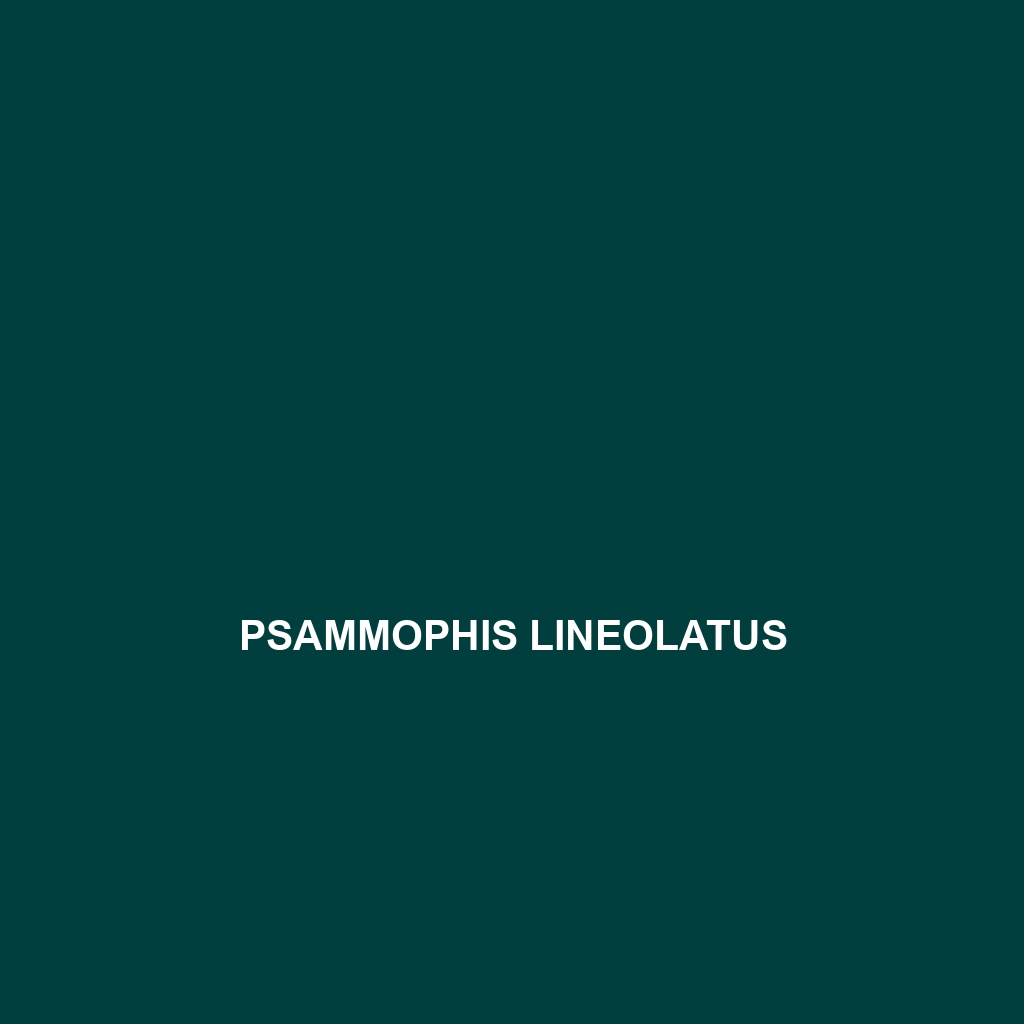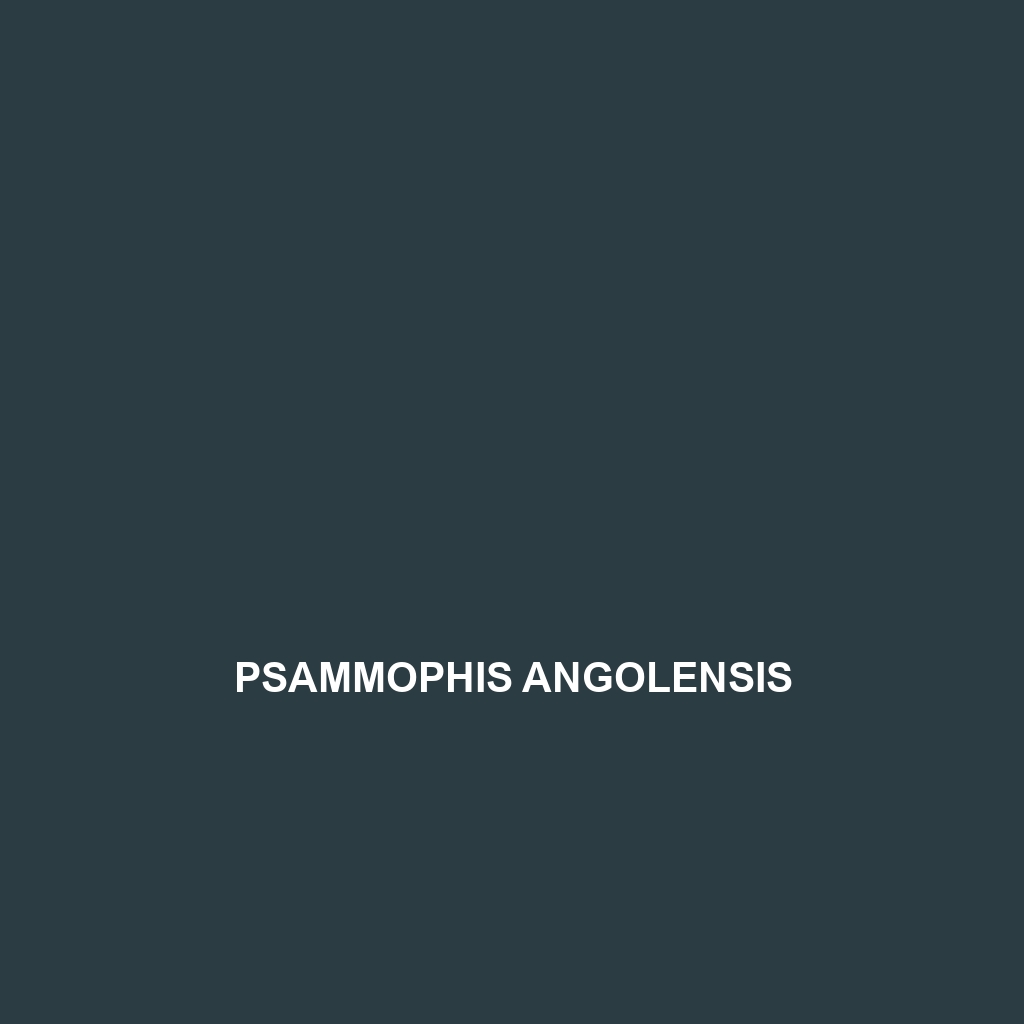<b>Psammophis trivirgatus</b>, or the Three-striped Sand Snake, thrives in sandy environments across Africa and Asia, characterized by its light brown body and three distinct stripes. This diurnal predator features a keen sense of sight and rapid movement, primarily feeding on small mammals, lizards, and insects, while playing a vital role in maintaining ecological balance.
Tag: IUCN Least Concern
Psammophis sibilans
<b>Psammophis sibilans</b>, also known as the African Slender Snake, is an agile and slender predator that thrives in savannas, grasslands, and subtropical forests across Africa. With a length of 60 to 80 centimeters and a distinctive mix of light browns, greens, and yellows for effective camouflage, this diurnal snake primarily preys on small mammals, lizards, and insects, playing a crucial role in its ecosystem.
Psammophis praeornatus
<b>Psammophis praeornatus</b>, also known as the East African sand snake, is a slender, diurnal species found in savannas, grasslands, and wooded areas of East Africa. This agile predator primarily feeds on small rodents, lizards, and insects, playing a crucial role in maintaining ecological balance within its habitat.
Psammophis lineolatus
<p>Discover the <b>Striped Sand Snake (Psammophis lineolatus)</b>, a swift and agile predator native to southern and eastern Africa, known for its distinctive light brown or pale yellow coloration with dark vertical stripes. Thriving in warm, arid habitats, this snake plays a crucial role in maintaining ecological balance by controlling local prey populations.</p>
Psammophis jallae
<p><b>Psammophis jallae</b> is a medium-sized, semi-arboreal snake native to tropical and subtropical Africa, characterized by its slender body, striking pale cream to sandy yellow coloration, and bold black or dark brown stripes. Thriving in warm climates, it plays a crucial role in its ecosystem by regulating prey populations and exhibiting fascinating behaviors, including unique courtship displays and opportunistic feeding on small vertebrates and invertebrates.</p>
Psammophis cornusafricae
<b>African Sand Snake (Psammophis cornusafricae)</b> is a slender, diurnal snake native to sub-Saharan Africa, thriving in sandy savannas and open grasslands. With a length of 60 to 90 centimeters, it features smooth, camouflaging scales and exhibits fascinating hunting behaviors, primarily feeding on small rodents, lizards, and insects.
Psammophis biseriatus
The <b>Banded Sand Snake</b> (<i>Psammophis biseriatus</i>) is a striking African serpent known for its beautiful alternating dark and light bands, reaching lengths of 50 to 100 centimeters. Thriving in savannas and dry grasslands, it plays a vital role in controlling rodent and lizard populations while exhibiting fascinating behaviors like diurnal hunting and unique courtship displays.
Psammophis brevirostris
<p><b>Psammophis brevirostris</b>, commonly known as the short-snouted sand snake, is a slender, agile snake found in the arid savannas and dry grasslands of eastern Africa, particularly in Tanzania, Kenya, and Sudan. Known for its striking yellowish and light brown coloration, this diurnal carnivore preys on small rodents, lizards, and insects, showcasing impressive burrowing abilities and speed that aid in its survival.</p>
Psammophis angolensis
<p><b>Psammophis angolensis</b>, or the Angolan sand snake, is a slender, diurnal predator native to sub-Saharan Africa, known for its distinctive coloration and adaptability to various sandy habitats. Typically reaching lengths of 1.2 to 1.5 meters, it primarily feeds on small vertebrates and plays a vital role in maintaining ecological balance in its environment.</p>
Psammophilus blanfordanus
<strong>Blanford's Rock Lizard (Psammophilus blanfordanus)</strong> is a slender, carnivorous lizard found in temperate forests and savannas of India and Nepal. This diurnal species, measuring 15 to 20 cm, adapts well to rocky environments, showcasing vibrant coloration that aids in camouflage and an important role in regulating insect populations.








